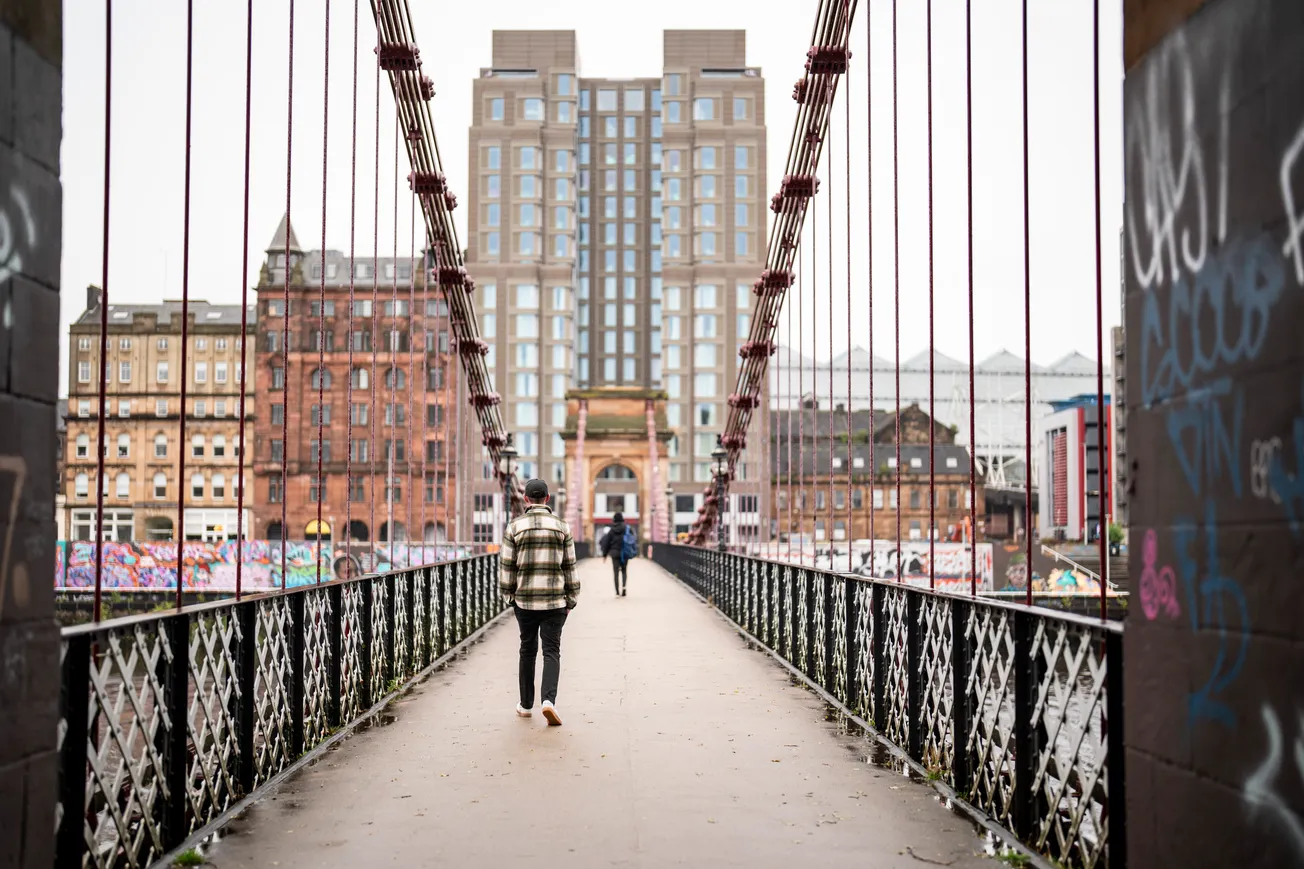Our first-ever weekend read is a brilliant essay by Dani Garavelli, one of Scotland's leading writers, who on top of her column for The Herald has written features and long reads for the Guardian, the Scotsman, the Times and the London Review of Books.
The first commission we made when we decided to launch The Bell was asking Dani to write about the state Glasgow finds itself in. A sense of decline pervades conversations about the city, but is it justified? And can we move beyond it?
The piece is accompanied by original photographs taken for The Bell by Peter Summers.
By Dani Garavelli
Shortly after it opened in April, I visited Greenock’s George Wyllie museum. The Wyllieum, as it is known, is housed in the gleaming Ocean Terminal. At its back, full-length windows yield glorious views of the Clyde. Wyllie’s best-known artworks are the straw locomotive he suspended from a crane by the river, and the paper boat he floated up it; it is fitting that visitors should gaze on puttering pleasure craft and the cruise ships docked outside.
The locomotive and paper boat were laments for a lost age when the Clyde was the centre of the engineering world. But, created in 1987 and 1989 respectively, they also marked the moment Glasgow shed its post-industrial widow’s weeds and stepped out in brand new glad rags. With their irreverence and verve, Wyllie’s totems encapsulated the spirit of the city’s transformation. Recast now as museum pieces, they sound a fresh threnody: for the energy and vision that drove it.
As a student in Finnieston, pre-gentrification, I watched that transformation first-hand. When the ceiling of my shared tenement flat fell in, there were no chi-chi cafes to escape to; just a grubby off-licence called Raymondo’s and The Snaffle Bit, where we nursed our pints of snakebite until the rain subsided.
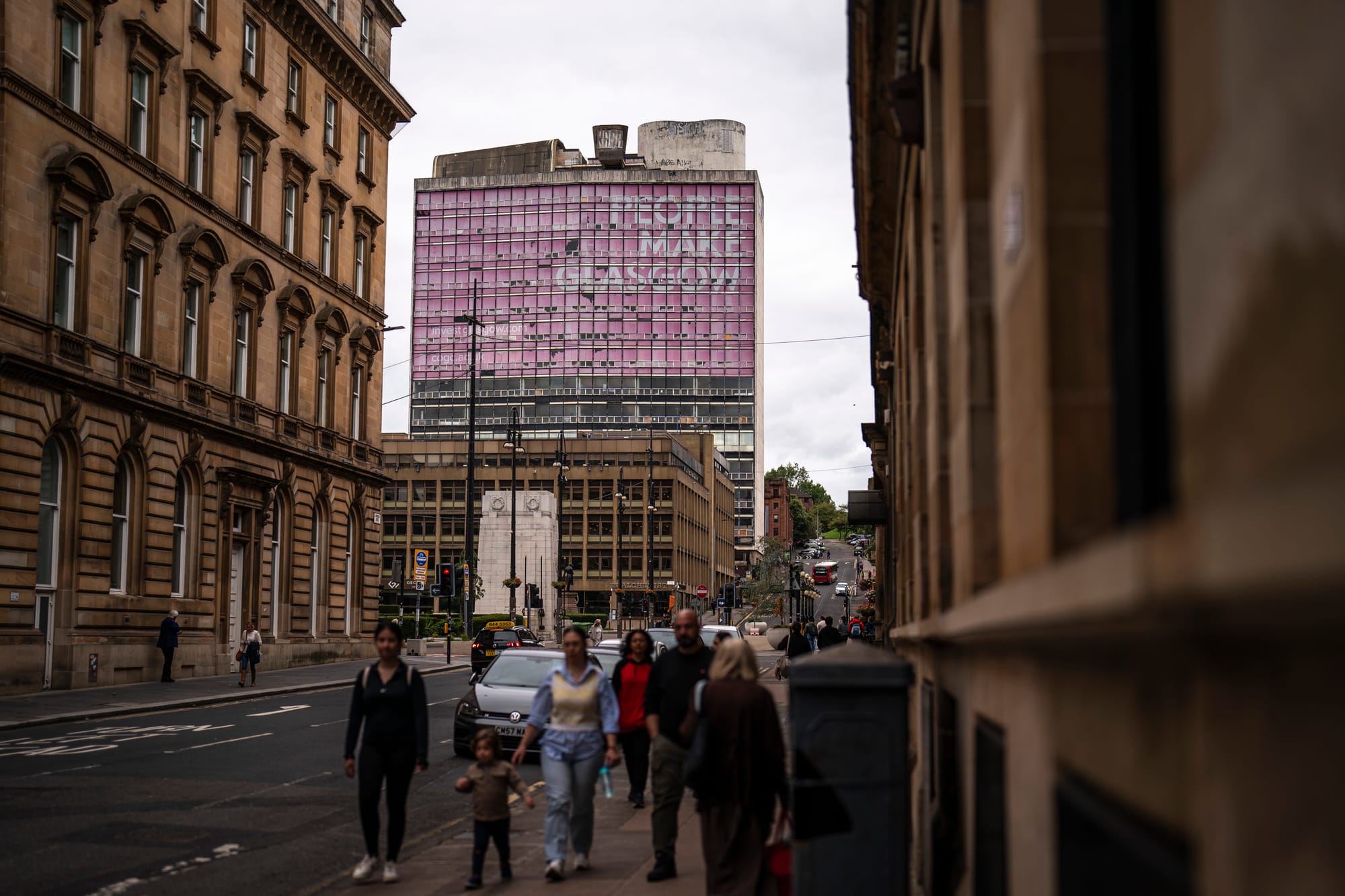
Yet the city, like us, was on the cusp. We may have sneered at lord provost Michael Kelly’s 'Glasgow’s Miles Better' campaign, but as the grime was scrubbed from the city’s face and beacons were lit in one dark corner after another, we could not ignore its power. The Burrell, Mayfest, the SECC, Princes Square, the Garden Festival, the Royal Concert Hall, the regeneration of the Merchant City and the European City of Culture, all within the space of ten years. It was a remarkable rebranding that other cities — Dublin, Birmingham, Manchester — would seek to emulate.
These days it can feel like we are watching the movie on rewind. In a similar timeframe, a comparable number of lights have been snuffed out. The Glasgow School of Art, the O2 ABC, the Lighthouse, Rogano, Victoria’s nightclub, and flagship Sauchiehall Street stores, such as BHS, Watt Brothers and M&S all destroyed or closed; Mayfest long gone; this year’s Aye Write festival cancelled, the Citizens Theatre facing liquidation and, most recently, the Centre for Contemporary Arts (once the Third Eye Centre) announcing its closure from December to March 2025 in the face of its increasingly precarious finances.
Glasgow has not lost its capacity to excite. On frosty nights, heading gig-wards along the Gallowgate, the Barrowlands’ fairground dazzle still quickens the pulse. On late summer evenings, crossing the Kingston Bridge, the sun’s mellow glow on the Hydro still says: “Welcome home.” Look up!, we urge tourists. Those who do are rewarded with corbels and finials, their beauty complicated, but not erased, by the city’s belated reckoning with its links to the slave trade.
But much of Glasgow’s Victorian and Georgian legacy, a large amount of it in the hands of absentee landlords, has been left to rot or burn. Buddleia, that symbol of bombed-out blight, has a stranglehold on rooftops, railway embankments and the city’s hundreds of derelict sites. Meanwhile, our public transport system takes a perverse pride in its inadequacy. ScotRail advertises its reduced timetable as if it were an achievement worthy of Mussolini. Ditto the Strathclyde Partnership for Transport (SPT), and its failure to run the subway after 6pm on a Sunday. First Bus’ electronic arrival boards are a triumph of disinformation. The much-vaunted Glasgow Airport Rail Link has been abandoned, and the Clyde Metro is grinding its way through the consultancy mill.
Where once the talk was all about Glasgow’s rise from the ashes, today it’s of brokenness and decay. Streets which once bristled with self-worth take no interest in their appearance, while citizens, following suit, trail litter in their wake. There’s a shame, too, in the staggering drunkenness of Friday/Saturday nights, the ripe-for-exploitation vulnerability of the teenagers who hang out at the Four Corners, and the poverty that spills out of empty doorways in the form of gaunt-faced rough sleepers. On Sunday mornings, the streets are rank with the detritus of the night before: discarded chip wrappers, vomit, blood. The cone on top of the Duke of Wellington’s head — so long a symbol of Glaswegian gallusness — is not so funny when the scene he surveys is heavy with dejection.
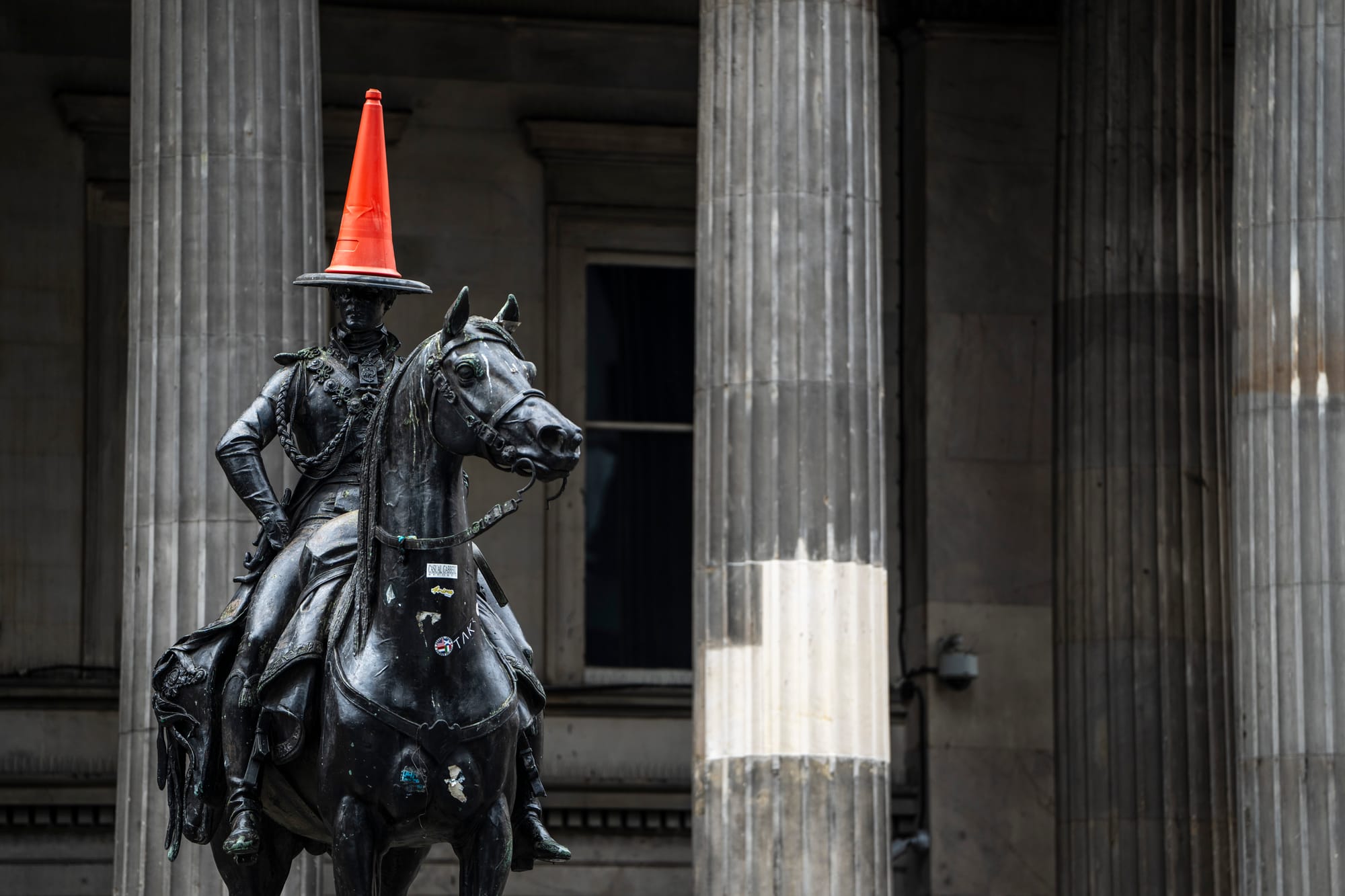
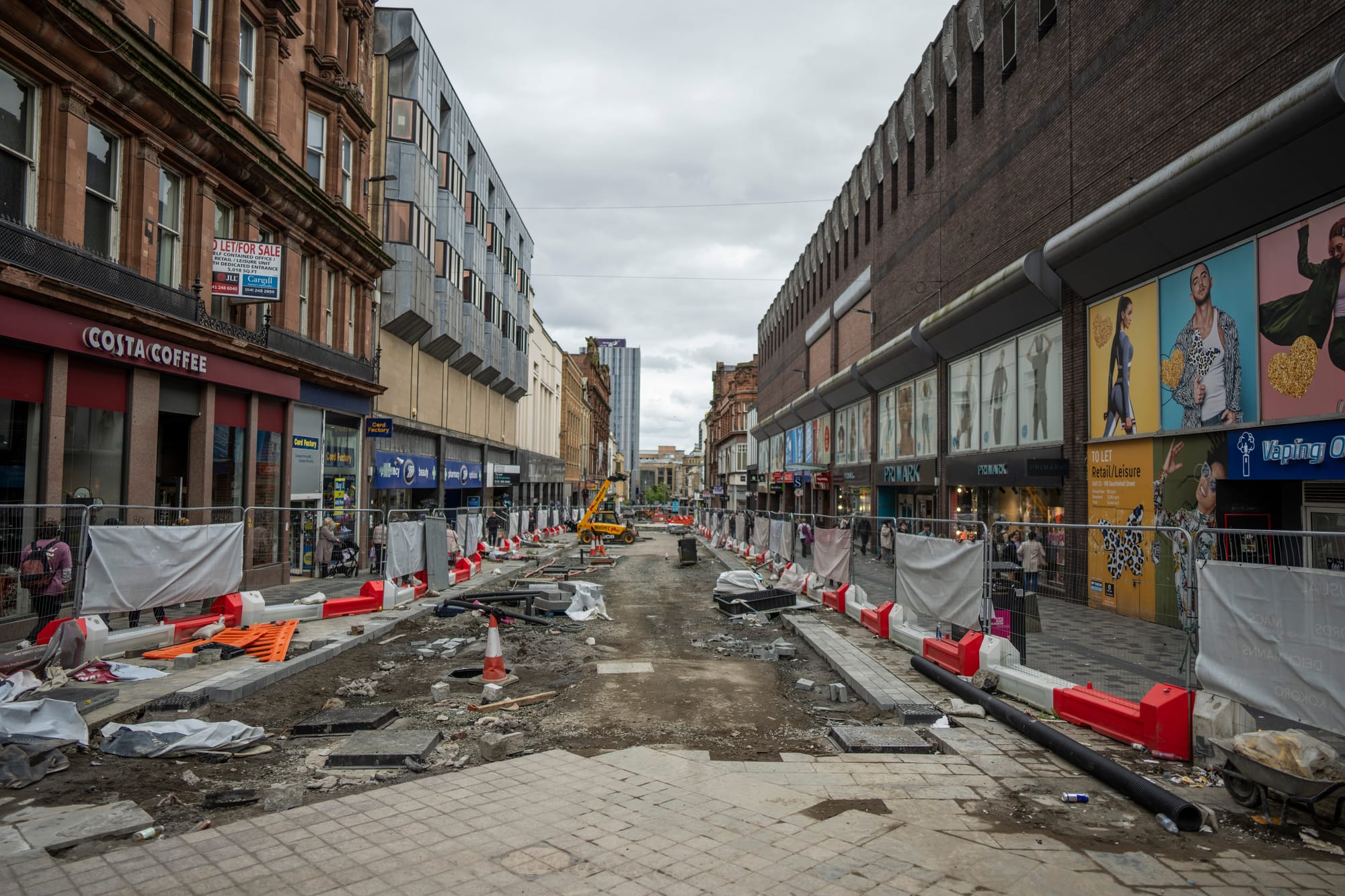
The city has a different slogan, now: People Make Glasgow. The faded words are still visible on the long-vacant Met Tower, which looms over George Square (plans to turn it into a digital hub were cancelled). But having decanted almost half its population out to the New Towns, people are precisely what Glasgow lacks. Those who remain, or commute from outside its borders, feel its soul has been ripped out. “There’s something missing,” says Ian Fraser, a passerby I speak to outside the City Chambers. Fraser has travelled in from Lenzie. “There’s so much litter and all the focus is on Buchanan Street — if you walk down Argyle Street, it’s a bit slummy,” he says.
On a bench nearby, Lilias Summers has come in from Bearsden. “In some ways, Glasgow is better than when I was young,” she says. “My granny, who lived in Westerton, used to say the only time she could see the Renfrewshire Heights was when the factories stopped for the Glasgow Fair. These days you get a lovely view.” Originally from Gourock, she used to go on shopping trips with her mum to the now-diminished Sauchiehall Street. “I remember all the great department stores. But there’s nothing there now; I don’t know how Waterstones survives.”
Earlier this year, Rory Olcayto, former editor of the Architects’ Journal, delivered a provocative speech about Glasgow’s malaise to the Royal Incorporation of Architects in Scotland in which he compared the city to a shipwreck where “drive-thru Burger Kings and Starbucks [were] waved through planning weeks before COP26 [rolled] into town”; where “demolition is the city’s structure of feeling — a wrecking ball looming behind every move the city makes, every thought it has about its future”.
Some felt the speech was too harsh, and stripped of context. While London and Manchester may be dripping with foreign investment and build-to-rent (BTR) projects, it’s an extractive model which has arguably pushed poorer people to the fringes. Meanwhile, other cities, like Birmingham and Sheffield, have suffered a similar fate to Glasgow’s in austerity Britain.
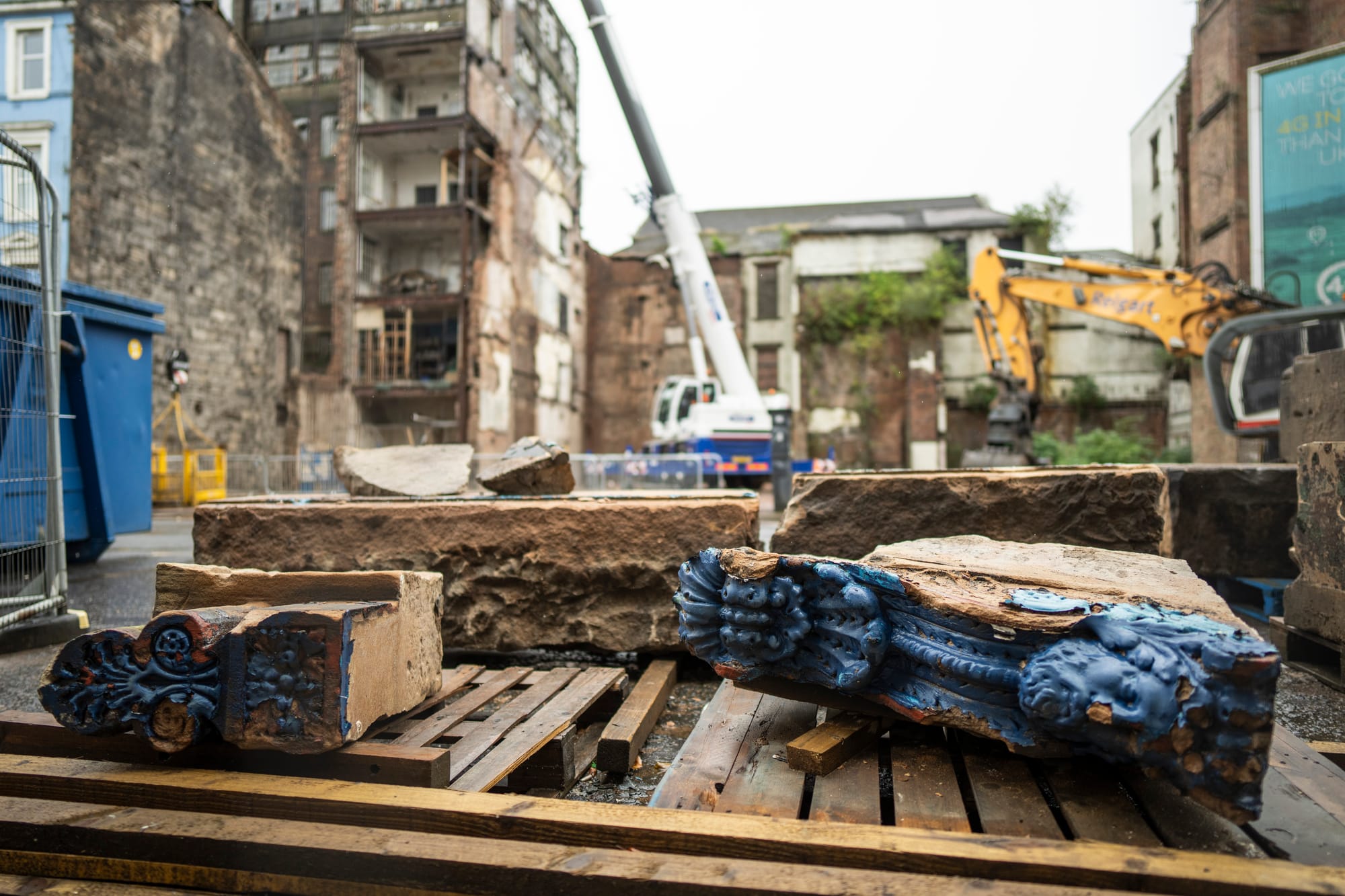
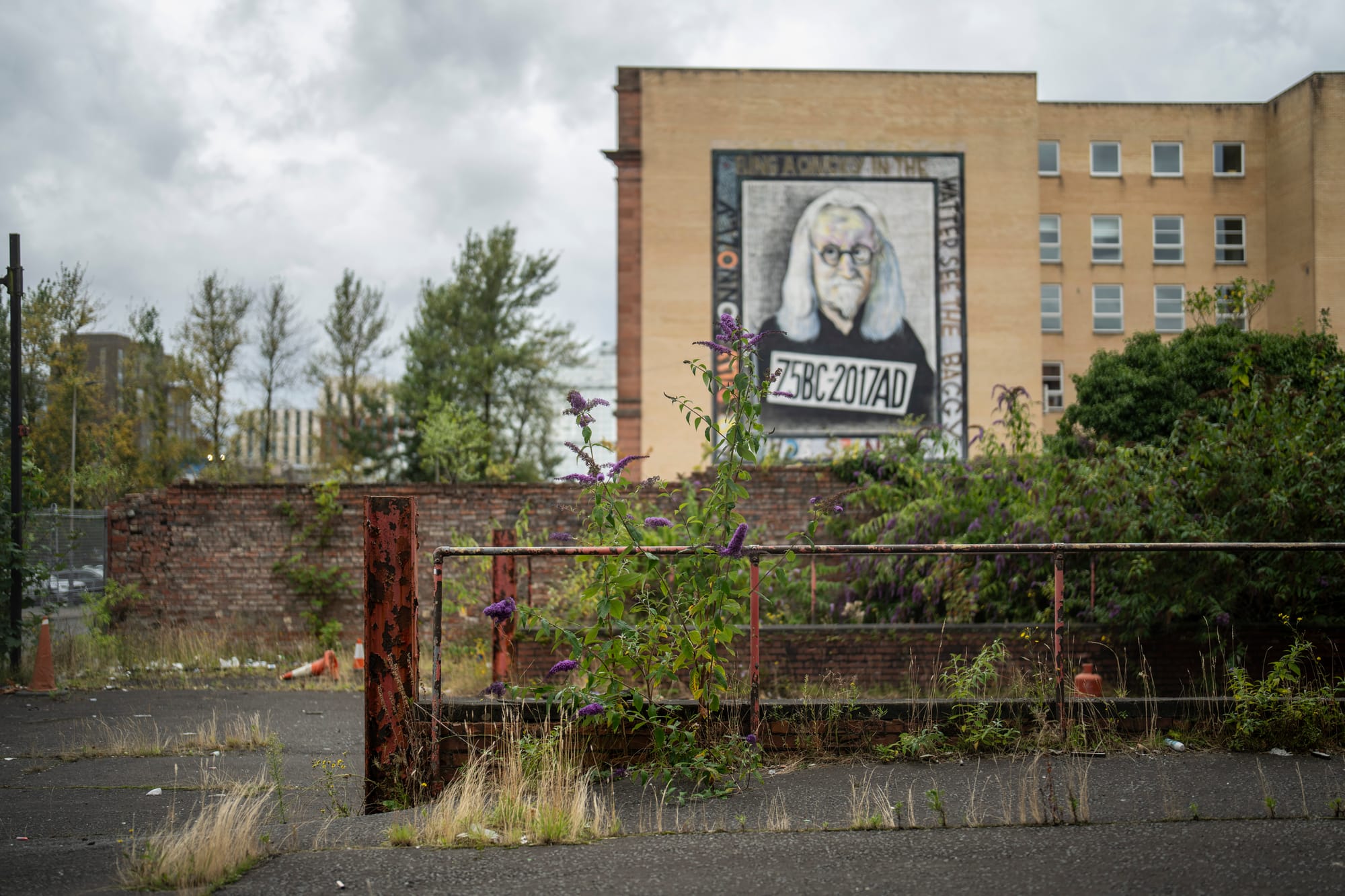
Nor is decline the whole story, according to Jude Barber, whose firm Collective Architecture has been involved in a slew of innovative projects, including fabric and energy upgrades to three 1960s tower blocks at Woodside, which showcased how high rises could be refurbished rather than demolished. “Not long ago, I was at a talk on the city’s troubles,” she says. “I came from the beautiful Glasgow Women’s Library — the only accredited museum for women’s history in the UK. I cycled through Glasgow Green, which used to be dangerous, and saw young people doing keep-fit. I went past the Rowing Club and saw boating on the Clyde. I cycled over the river. I passed the amazing new City College building, the New Gorbals and the Barclays campus. And I thought: ‘Twenty years ago, I couldn’t have done that’.”
Still, when I reflected on all the neglected buildings that Labour MSP Paul Sweeney and director of Glasgow City Heritage Trust Niall Murphy had shown me in 2022, when I was writing about Historic Environment Scotland’s Buildings at Risk register, I realised all but one was still on the list. The one that wasn’t — the Sir John Maxwell School in Pollokshaws — had been torn down. Last year’s resurvey saw 46 more Glasgow buildings added.
Meanwhile, Sweeney, who is on the GCHT board, says a City Deal project to further entrench the expressway that carves through Springburn shows Glasgow hasn’t learned from the mistakes it made when it demolished some neighbourhoods and isolated others to build the M8. The project aims to improve the flow of traffic from Bishopbriggs in East Dunbartonshire, to the city centre. “How high-handed is it that the only City Deal project involving Springburn — the poorest community in the city — is [once again] being imposed on it by a suburban middle-class community to its north?” he asks.
My tour around the city
In his speech to the Royal Incorporation of Architects in Scotland, Rory Olcayto said: “Glasgow doesn’t work properly any more because nobody knows what it is for.” Wanting to put this theory to the test, I asked Paul Sweeney and Niall Murphy if we could take another tour. I hoped that seeing the city through their eyes would help me understand why its reinvention had stalled, and whether anything could be done to rekindle it.
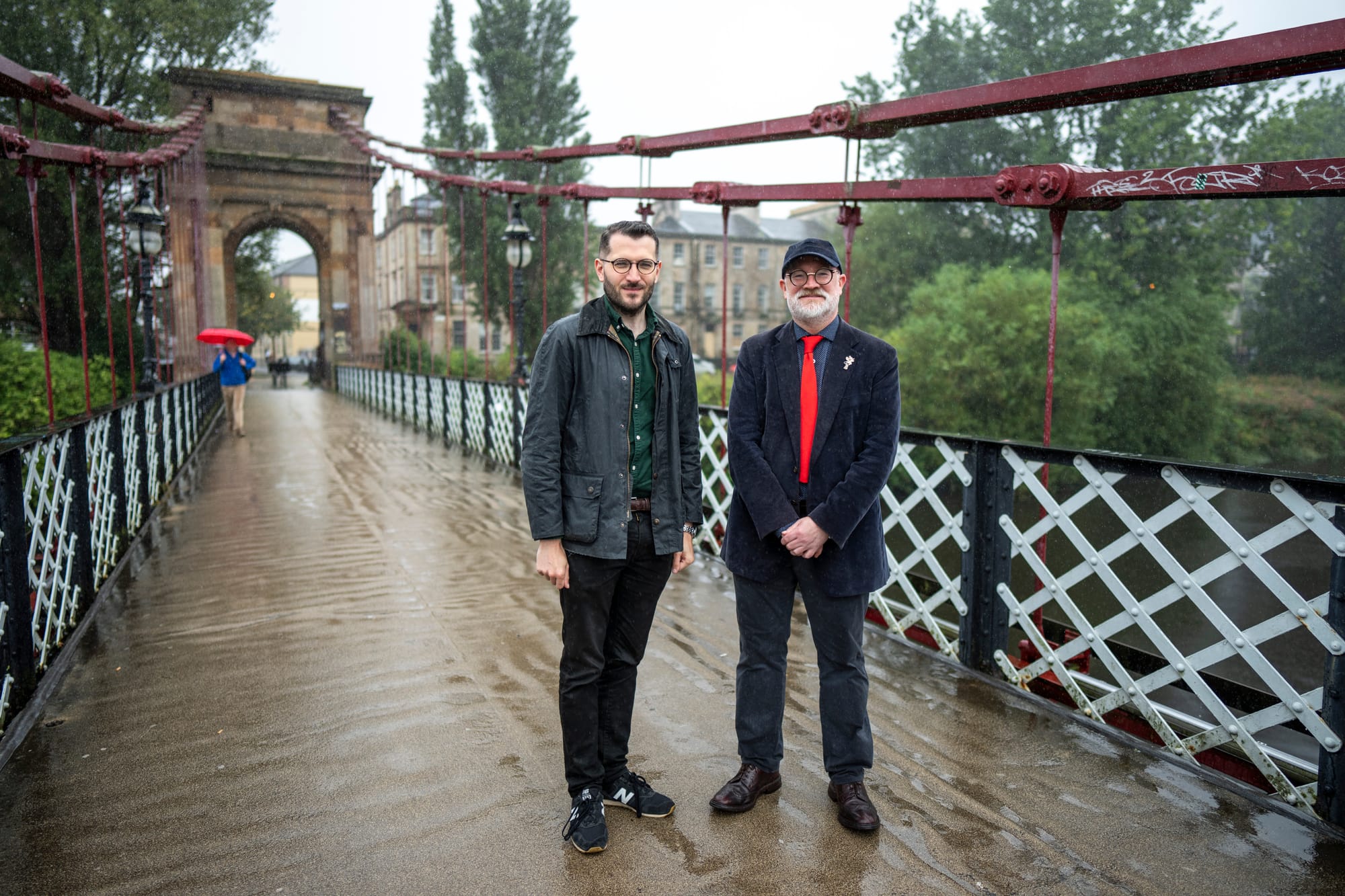
We meet at the corner of Ingram Square, the block that kickstarted the Merchant City’s regeneration in the 1980s. Murphy tells me the city council placed a Compulsory Purchase Order (CPO) on the old buildings in the hopes they would become an extension to the Strathclyde University campus. When it turned out the university didn’t need them, it brought in the Burrell Company, who brought in Elder & Cannon architects to design a mix of flats and shops inspired by New York’s warehouse conversions.
Today, it is still a buzzy hotchpotch of cafes, flats and hairdressers. On a red brick wall, someone has scrawled: “Life is beautiful.” Nearby, the Italian Centre — with its palazzo courtyard, futurist friezework, and designer outlets — marks the zenith of flashy Merchant City ambition. In the window of Dylan Joel Studio, the words “Do You Want to Play Filthy?” are picked out in sequins on the back of a black hooded top.
Murphy says that overreach halted the Merchant City’s rise. In the early 2000s, Selfridges made the city council an offer it couldn’t refuse in the form of a Toyo Ito-designed department store on Candleriggs Square, then failed to deliver. The company held on to the site for more than a decade. After the derelict buildings were demolished, it lay vacant until the Social Hub, a 500-bed hotel and student block, opened earlier this year.
But there are broader social factors at play. The breaking up of Strathclyde Regional Council into 12 smaller authorities in 1996 shrank Glasgow’s tax base, while the opening of the Scottish Parliament in 1999 saw power shift to the east. Even as it has pushed Westminster for greater devolution, the SNP government has emasculated local authorities, cutting and ring-fencing their budgets, then freezing the council tax.
Glasgow has been hit harder than most. Having agreed to settle its equal pay debt, it is struggling financially and resentful towards residents of neighbouring authorities who use its services without contributing to their costs. Its planning department has haemorrhaged expertise. To bolster its income, it lets out its parks and civic spaces to music festivals and the tacky Winterfest, which sees George Square boarded up for over-priced fairground rides and over-cooked bratwurst stalls.
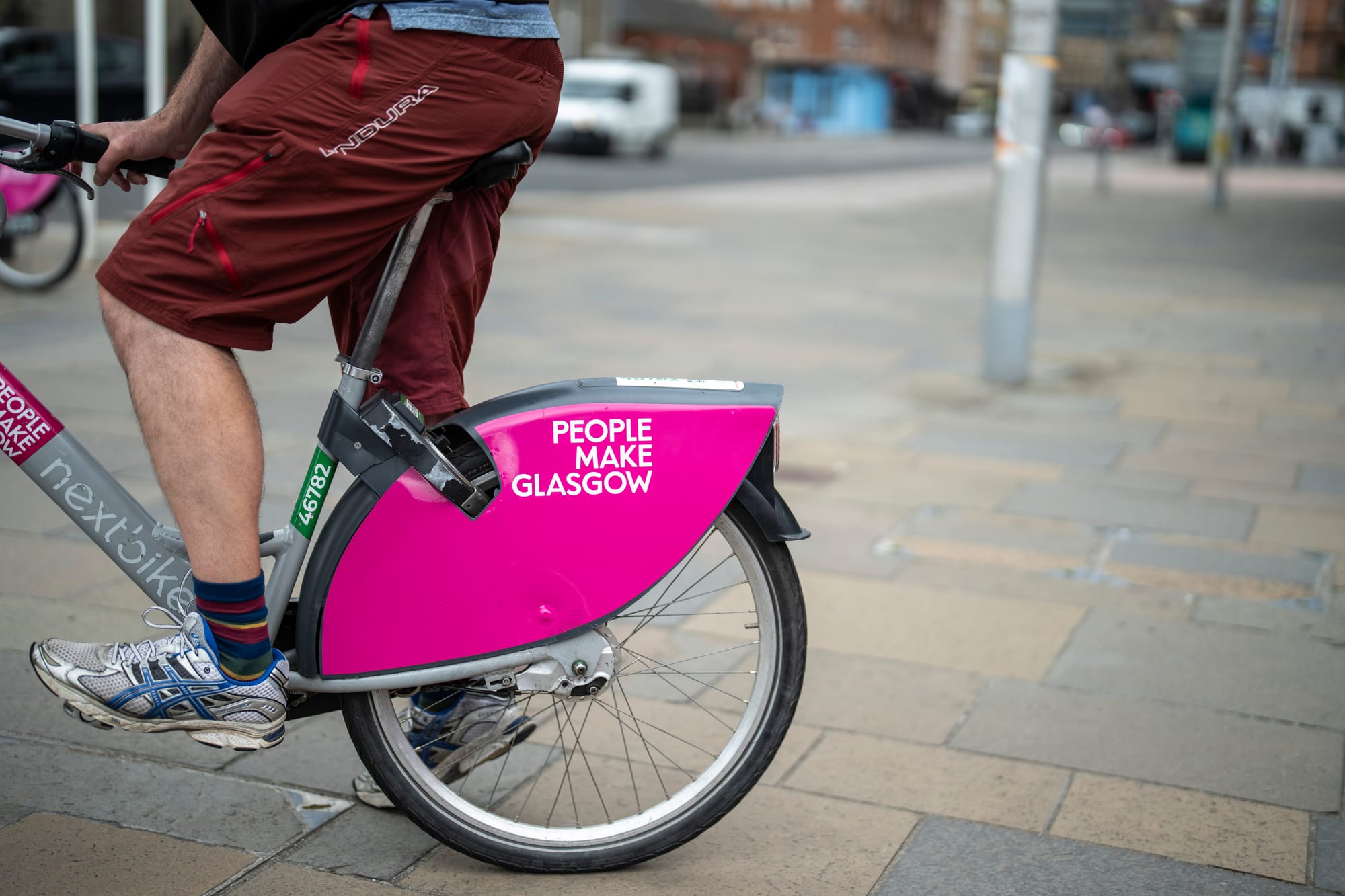
The council aims to increase the city centre’s population to 40,000 by 2035. Phase two of the Candleriggs Square redevelopment is a 17-storey, 346-apartment build-to-rent (BTR) scheme. But Sweeney says Scottish government rent controls, introduced to protect tenants from bad landlords, have stymied other BTR proposals, including one to create housing plus Purpose Built Student Accommodation (PBSA) on the former college goods yard on High Street.
Another developer has come to the rescue, but fresh planning consent had to be secured, slowing the process down. PBSA blocks are springing up everywhere. Current plans include a 273-bed scheme on Osborne Street, a 230-bed scheme on the former Archaos site in Queen Street, a six-storey block on St George’s Road, and a 16-storey block on Renfield Street. This proliferation is causing consternation amongst critics who complain the buildings are bland, the population transient and the students exempt from council tax. But Murphy and Sweeney are sanguine. “The exemption from council tax is not ideal, but students who come here may stay on and make a valuable contribution,” Sweeney says.
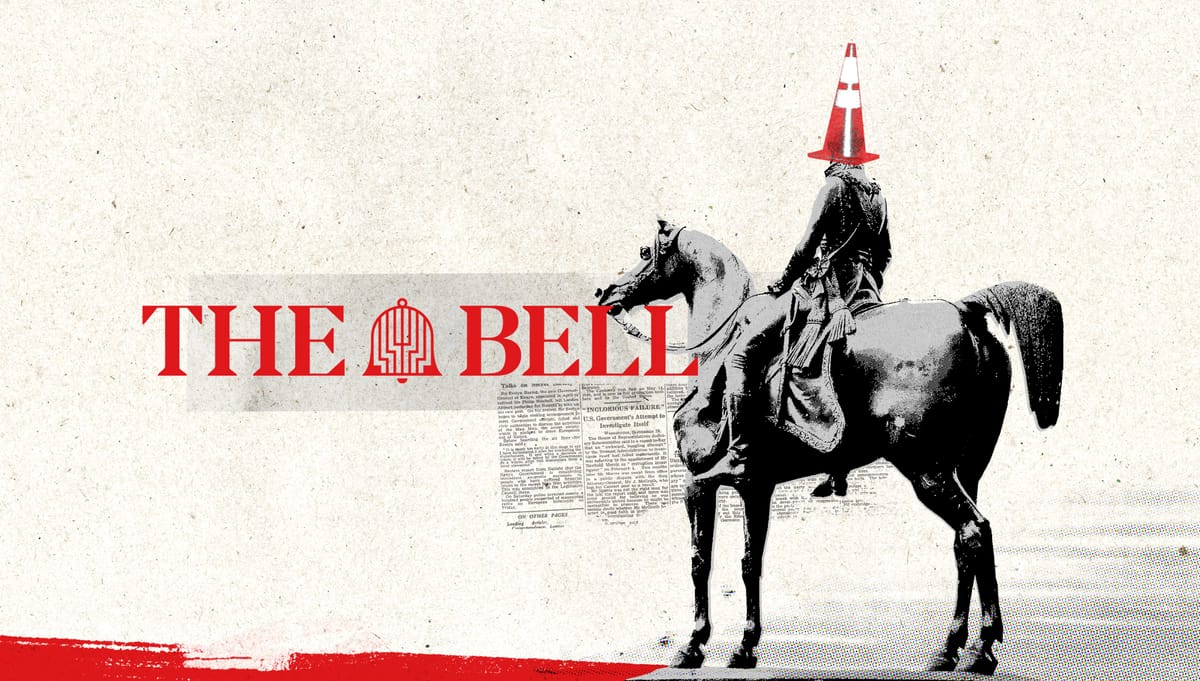
From Ingram Square, we head towards the Clyde. In one corner of the untitivated land behind the St Enoch’s Centre, pretty Kings Court, home to hip cafe bar/record shop Mono/Monorail and psychedelic vintage emporium Mr Ben, offers a tantalising glimpse of what could be.
As we walk, we talk about Glasgow’s plans and strategies. “The Avenues”, the transformation of the city centre’s main thoroughfares, has already begun. The demolition/redevelopment of St Enoch Centre has been approved while the redevelopment of Buchanan Galleries is out to public consultation. The city is to benefit from a share of the £200m National Lottery Heritage Places fund which should help turn Sauchiehall Street into a new cultural quarter.
Then, there are those proposals which appear to be pipe dreams, serving only to impede progress. Down by the river, Murphy tells me about the city council’s vision for the area around Custom House Quay. “The idea is to build out into the Clyde, treating the whole section from Glasgow Green to the SECC as a linear park,” he says. I tell him it sounds amazing. “The council is doing its best, but where’s the money going to come from?” he replies. While they wait for this conundrum to be resolved, everything else is put on hold. “Look at that,” Sweeney says, pointing to an old steamer waiting room. “In Dublin, it would be a cafe with tables and chairs on the roof, but no one wants to talk about it.”
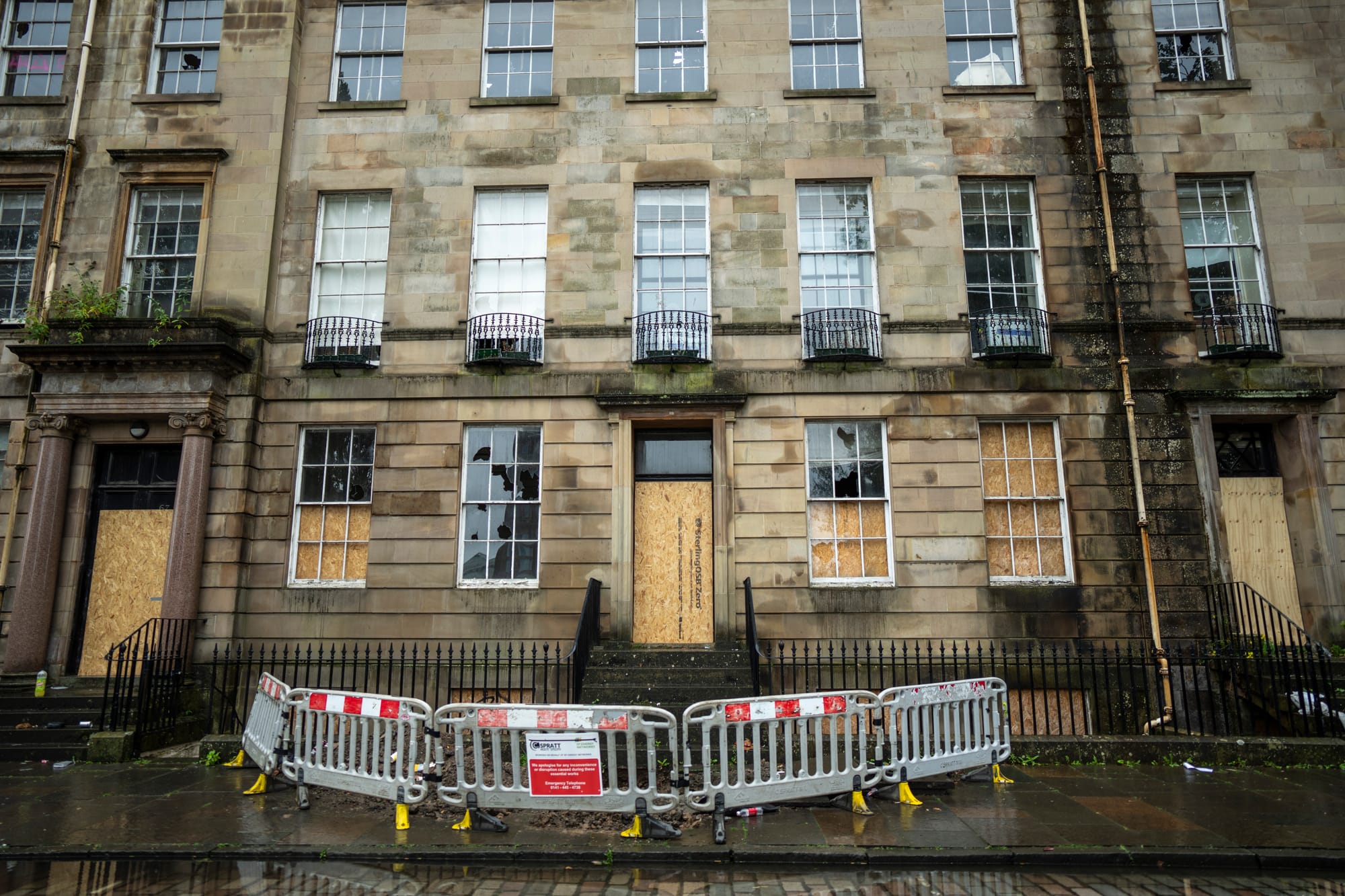
We cross the suspension bridge to Carlton Place, a Georgian terrace, designed as a south bank showpiece. It ought to be one of the city’s crowning jewels. To our left lies the boarded-up Laurieston House, with its stunning interior Greek Revival plasterwork, soon to be converted into 11 serviced short-stay apartments. Sweeney says the apartments would be ideal for bankers visiting the Barclays campus, but to get there, they would have to pass the B-listed former Prince and Princess of Wales Hospice, which has lain vacant since 2018 and is collapsing before our eyes. Open to the elements, it is frequented by teenagers, five of whom had to be rescued from a fire in January.
I ask Sweeney why the council doesn’t do something to protect it. “It has powers to take enforcement action,” he says. “It didn't do so after the fire because the owners claimed they were about to start work.”
The hoped-for regeneration kick-started by the Barclays campus hasn’t reached the corner of Oxford Street and the A77. We finish our tour at what was once the India building, but is now a demolition site. Together, we watch cranes shift rubble back and forth. To the left stands the exposed gable of Chateau Franz Ferdinand, so-named because the band members used it as a base until they were thrown out for hosting illegal parties. The residents in the tenements next door have been evacuated.
The people who make Glasgow were offered little support. “They had to declare themselves homeless,” Sweeney says. He chose this block because it is similar to Ingram Square. “If the city could rescue Ingram Square in the 80s, why not this block now?” he reasons. Carved wall brackets are strewn at our feet. A bright blue bearded face peers up from a chunk of stone. “Look on my Works, ye Mighty, and despair.”
Getting it right
A city is more than its centre, so I make my way to Sighthill — a high-rise scheme north of the Clyde, and one of those places the M8 cut adrift — to see how it is faring. The now-demolished Pinkston flats, built close to a former chemical works, and a sulphurous pool known as “stinky ocean”, were loved and hated. The repositories of people’s hopes for a better future, they wielded a powerful grip on the collective imagination. Now, the land they once occupied is part of the £250m Sighthill Transformational Regeneration Area, which aims to create 826 new homes and reconnect those who live there to the city centre via a new pedestrian and cycle bridge.
Before we talk about this regeneration, we should understand what made it possible. Just as in a house, the most important home repairs — mending the roof, renewing the boiler — are the least sexy, so north Glasgow remained underdeveloped for lack of adequate drainage. Finally, the council, engineering company AECOM, Scottish Water and Scottish Canals, came together to create the North Glasgow Integrated Water Management System (NGIWMS). Incorporating the Forth and Clyde Canal, it is one of the first autonomous and dynamically managed surface water systems in the world.
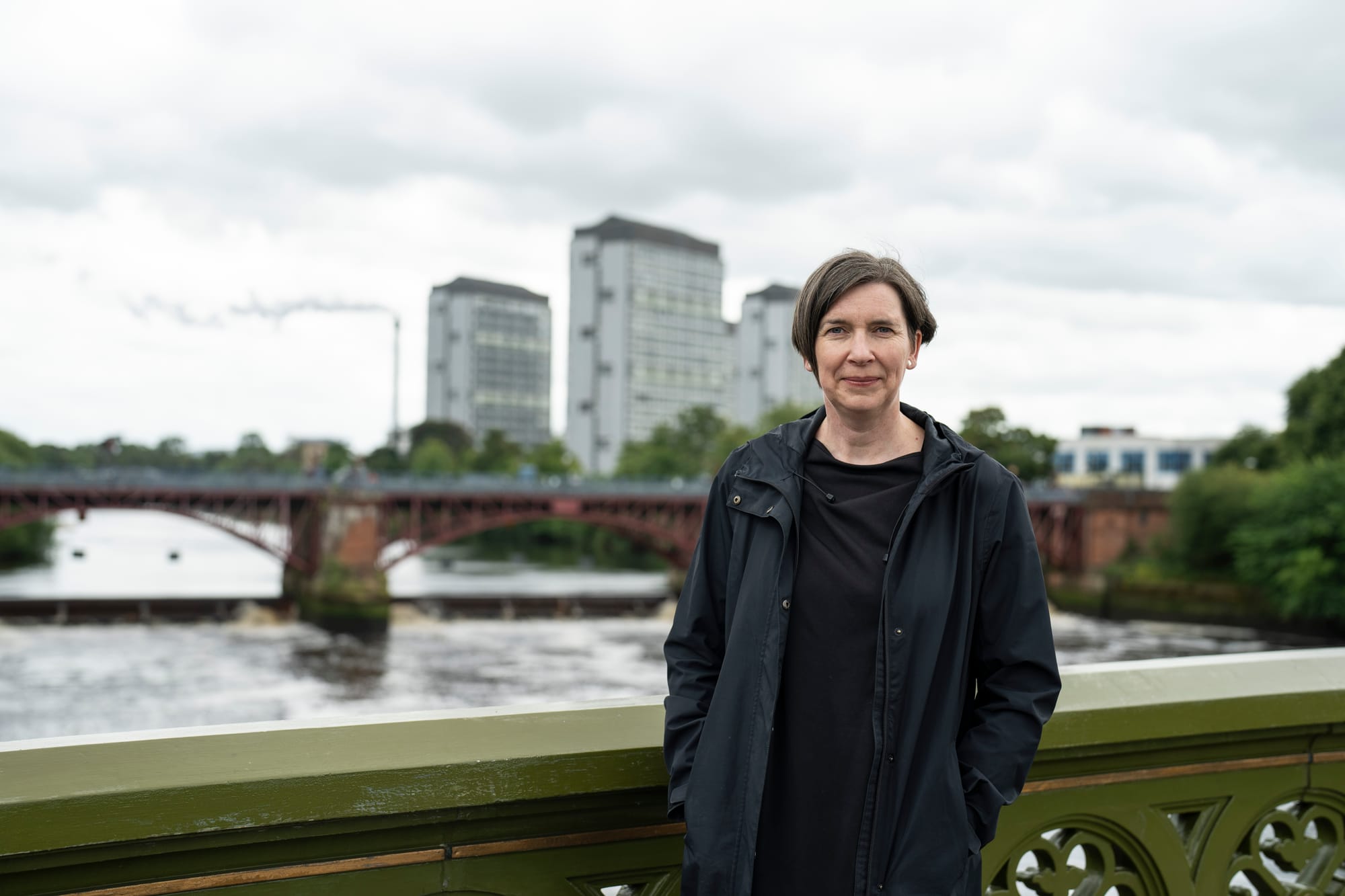
"This massive collaborative effort is an example of where Glasgow is getting it right,” says Jude Barber. Collective Architecture also designed the already-constructed first phase of attractive low-rise brick housing (144 homes) close to Pinkston Watersports. On the day I visit, three diving suits — one big, one medium-sized and one little — hang from a balcony to dry.
Effort has been made to draw the once-spurned outpost into the city’s fold. The new bridge, with its faux-rusty aesthetic, arches its plated back over the motorway traffic. On the Sighthill side, it is entered via a wide plaza, while on the city side, semi-circles of stacked, slatted railings atop steep concrete steps pay homage to the Provan gasworks. A community campus with an autumnal-red facade has also been built, but the area seems short of corner shops and cafes. Forging new communities can be a catch-22: the amenities won’t come without the residents, but the residents won’t come without the amenities.
The balance of properties — 628 for sale, 198 for social housing and mid-market rent — is controversial given the area’s previous demographics, while the proximity to the centre is a double-edged sword, with some residents claiming the streets are being used as a car park by commuters who want to avoid the Low Emission Zone. For those who do walk or cycle, the route into town is less than enticing. Once you leave the environs of the bridge, you are in the thick of industrial warehouses. “In an ideal world, you’d have a green route taking you all the way into George Square,” Barber says.
She would prefer the housing to be higher density. “There’s something around pace, too, and accelerating these things, so they join up sooner,” she adds. “Because the risk is, if you don’t do it quickly enough, it starts to get down at heel, and you never complete the big picture.”
A treasure up in flames
George Wyllie’s locomotive spent six weeks dangling from the Finnieston crane before being transported to the former site of the North British Locomotive Works in Springburn, where it was set alight, Viking-style, to reveal at its burned-out core a giant question mark.
That question mark continues to hang above Glasgow today. What is the city for? Where is it headed? How can we change its fortunes? There is no shortage of ideas. Sweeney would like to see a municipal development company similar to the Glasgow City Improvement Trust which existed in the second half of the 19th century.
Andrew Hoolachan, a lecturer in urban planning at the University of Glasgow, wants the M8 to be replaced and the creation of a large metropolitan authority, like those around English cities, with the ability to raise taxes and borrow money, along with a single transport authority and integrated system. He would like to see the return of trams, too, and greater civic ambition. “I sometimes wonder about the people in charge,” he says. “Have they travelled? Have they seen other cities? They need to decide what kind of city they want Glasgow to be in 2050 and work from there, rather than focusing on the next election cycle, the next budget cut.”
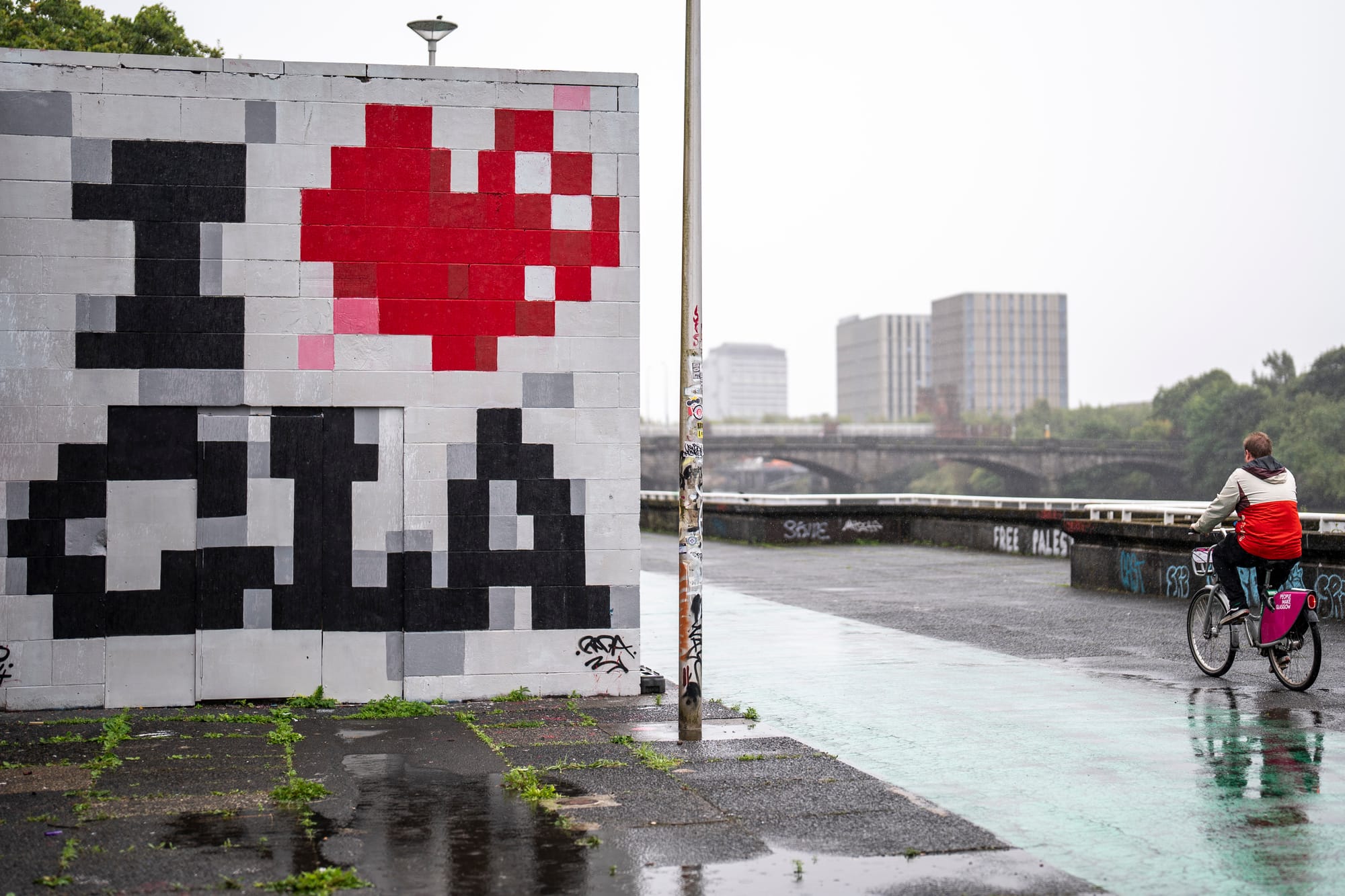
At the end of his speech, Rory Olcayto set out a 20-point plan for Glasgow. It included appointing a heavyweight mayor. You can see the attraction of this, given what Andy Burnham has done for Manchester and Anne Hidalgo for Paris. On the other hand, perhaps it’s time to move on from the machismo of one charismatic figurehead driving one grand plan. Glasgow led the charge as the UK’s first neoliberal city, but is there something desperate about forever chasing the next big sporting event, especially when the legacy of those events is contested?
The city’s eagerness to host a budget, no-frills Commonwealth Games 2026 — which no one else wanted — serves only to highlight the crushing of its spirit in the 12 years since it last staged the extravaganza, a few months before the Indyref, when the streets throbbed with party vibes, gourmet food stalls, and heightened expectation. There will be none of 2014’s dancing tea cakes razzmatazz, but expect much resentment if a single penny of public money, which could have been invested in homegrown festivals, is spent propping up some other city’s cast-off.
Nor should London’s hyper-capitalist growth model necessarily be viewed as a missed opportunity. “Perhaps we don’t need the big boys with their flash cash to come in and fly out,” Barber says. She would prefer the city to remake itself through a feminist lens, noting that Vienna has been “gender-mainstreaming” for 20 years. This means it puts women’s needs at the heart of its planning decisions.
The result is safer, more inclusive streets and parks, co-housing projects, and a lake you can cycle or take the tram to and swim in on a summer’s evening. “In the city centre, there’s swings, a rain garden, trampolines. It feels very communal. That’s what we need to get back: an idea of public living,” Barber says.
Two years ago, the city council declared Glasgow the UK’s first feminist city, having backed a motion brought by Green councillor Holly Bruce. She is driving plans to place solar lights in Queen’s Park. But, as with everything, progress is slow. And in the stasis, Glasgow’s beautiful old buildings continue to crumble.
A week after our walk, my phone pings. It’s a photo from Sweeney: the former hospice on Carlton Place is ablaze again. I can see flames licking the attic windows.
I drive down and we watch firefighters point their jets at the roof until the last amber sparks are extinguished. “We need to see new powers to make CPOs easier,” Sweeney tells a radio station later. “We need to see Compulsory Sale Orders [which would allow planning authorities to require vacant buildings or derelict land to be sold by public auction].” He also calls for a UK reform of a system whereby the renovation of old buildings attract 20% VAT while new-builds are zero-rated.
The following day, a demolition notice is served on the O2 ABC, which means its distinctive entry arch — with all the cinema and music memories it evokes — will be lost to whatever cultural quarter eventually emerges.
Along the Clyde from the hospice, archaeologists have been digging at the last undeveloped Garden Festival site. The dig is part of a larger project to retrieve and record remnants of the five-month jamboree which, in 1988, brought rollercoasters, installations and artworks to the abandoned docks. Artist Richard Groom’s sculpture of a floating head has been located in an Ayrshire boatyard; the Children of Glasgow fountain was found languishing in a bush. At the site itself, discoveries include old fence posts and a fragment of a Rogano wine jug.
Project leader Lex Lamb believes the Garden Festival was pivotal in changing the way Glasgow perceived itself and how it was perceived by the outside world. “Someone asked me recently what the Garden Festival proved: it proved what Glasgow was capable of,” he says. It makes you wonder how the city lost its way, and what relics we will be trying to salvage in 36 years’ time.
Before you go: This article was published by The Bell, a new email newsletter dedicated to Glasgow. Our goal is to help you understand this city better, via great journalism, inside tips and useful recommendations. Click here to find out more about us and please join our free mailing list. It's the only way to get everything that we publish – with no annoying ads or lists of links you need to click.
Comments
How to comment:
If you are already a member,
click here to sign in
and leave a comment.
If you aren't a member,
sign up here
to be able to leave a comment.
To add your photo, click here to create a profile on Gravatar.

